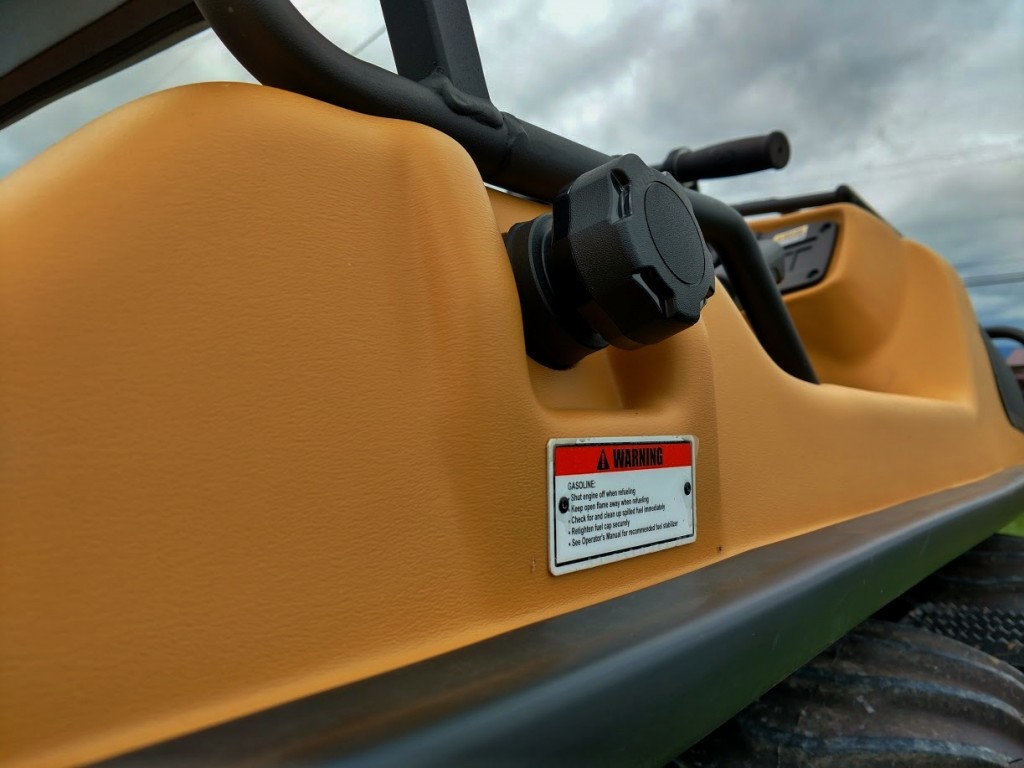Fueling Your XTV

Recommended Fuel
All gas engines used in Argos are designed to use automotive unleaded with an octane rating of 87 or higher, even at high altitudes. This fuel should contain no more than 10% ethanol or 15% MTBE. Methanol fuel blends are not recommended.
Kohler diesel engines are designed to use S 15 diesel fuel, the same fuel formulated for cars. Low-temperature formulations should be used if temperatures are below 32ºF. Local fuel distributors will switch to these formulations when temperatures drop, so when in doubt, buy fresh diesel. A fuel stabilizer should be used if the vehicle will be stored over 6 months to reduce water contamination and prevent algae growth.
For carbureted engines, fuel should be used within 30-45 days of purchase, or up to 90 days if it has been treated with a fuel stabilizer. If you’ll be storing your XTV for more than 90 days, use a siphon hose to drain the fuel tank. Once it’s empty, start the engine and let it run. When the engine dies, the carburetors and fuel lines are empty.
Newer fuel injected engines are less sensitive to fuel freshness. For long-term storage, Kohler recommends using a fuel stabilizer. Once the stabilizer and fresh fuel have been added, run the engine for a few minutes to pump the treated fuel through the fuel lines and injectors.
Filling the Tank
All models come with a 7.1-gallon fuel tank located under the driver’s seat. This tank is made of translucent polyethylene so you can see how much fuel is in the tank. The filler neck and cap are located on the right side of the hull next to the driver’s seat.
The fuel cap is designed to vent air through a tube along the body as the fuel heats up and expands. Filling the tank to the point that fuel enters the filler neck can cause it to pour out of the vent system once it heats up. If fuel leaks from the cap or there are signs of moisture inside the fuel, the cap needs to be replaced.
Spilled gasoline should be cleaned up immediately. Camouflage coatings are particularly sensitive to gasoline, but painted surfaces can also be damaged by exposure to fuel.
Carrying Fuel
No matter what type of engine your Argo has, you can expect it to run for 7 to 12 hours on one tank of fuel depending on operating conditions. Always fill up the tank before going on long excursions. If there is any chance that you’ll be out for more than a few hours, carry additional fuel in clean, vented fuel containers. Argo offers a mounting bracket to carry an extra fuel container on the back of their XTVs, freeing up space in the cab.
Protecting the Vent Hose During Accessory Installation
The fuel cap vents through a hose that runs along the inside of the upper body. Care should be taken when installing handrails or a convertible top kit. Both accessories have screws that can puncture the hose.
Getting the Parts and Service You Need for Your Argo
Whether you need repairs, accessory installation or just a few parts, you can get what you need at Shank’s Argo. We’re one of the largest Argo dealers in the East, and we’re a certified dealer for Kohler and Briggs & Stratton engines, so we can service everything on your vehicle. Visit us at 4900 Molly Pitcher Highway in Chambersburg, PA. To get here, take Exit 10 from I-81 and drive one mile east. To schedule a test drive, visit us online at www.shanksargo.com.
